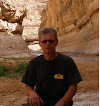16.06.2013 – 20.06.2013
The Journey: Tambo Quemado – Patacamaya - La Paz (300 km).
I could leave behind the Chile- Bolivia border at about one clock, hoping to reach La Paz (300 kilometers) before dark. The road was said to be ok , still the main road between Chile and Bolivia

Before Patacamaya it was necessary to pay the toll of 8 bolivano .
It is less than 100 kilometres from Patacamayast to La Paz kilometers, but the arriving there before dark became questionable , as almost 100 kilometers of the road was under road repair.

So anyway I got there in the dark and used the unexpected opportunity to drive a couple of hours through the center of the town.

The traffic was quite heavy , but the main thing is to know where to drive and when to brake, and a bigger car has usually a greater privilege and a car with a louder signal as well. Basic rules - nothing special or surprising . Red lights are generally accepted .

Roundabout roads also seemed to have some of its rules as well , something like that if you make enough signal, you can just join it.
Anyway, in a couple of hours I had made acquiantance with the city and reached the overnight place.In Mallasa, by The Hotel Oberland, there is a campsite which is known as an overnight place for overlanders and offers good opportunities to share travelling impressions.


La Paz in daylight . La Paz is the highest- altitude located capital in the world, ok, acctually it is said that Bolivia has two capitals, officially - the capital is Sucre, but the Government is located in La Paz and in all kinds of charts ' La Paz is mentioned as „the highest capital"

El Alto – the main street of the suburb of La Paz, I just happened to reach a local " bus station".


The colourful market of El Alto.

All kinds of goods are being traded starting from jeans up to the parts of cars new and old , tools, building materials and etc. , etc. .

Once there had been railway here at the side of the hill, farther is La Paz.




The pavements is like in Old Town of Tallinn.

Museo de Coca. Coca leaf cultivation is legal in Bolivia and Peru . Koka is a holy plant for Bolivians and it has been cultivated here for thousands of years.Chewing the coca leaves will help to relieve the high altitude desease and hunger and fatigue as well. A small but richly-exhibited museum exhibition gives a comprehensive overview of the history of coca cultivation. Taking pictures is not allowed, unfortunately.




The ' Zebra ' campaign.



Plaza Murillo, the parliament building in the background.


Catedral de La Paz, built in 1835


Evening rush-hour will soon arrive , and the streets are quite jammed.

Continued...



No comments:
Post a Comment